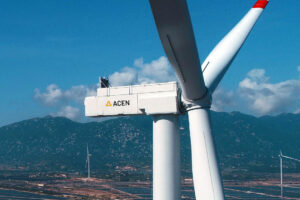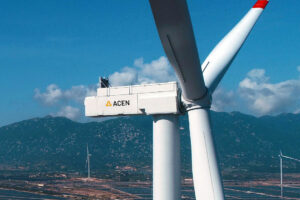Manila Water spends nearly P14B for service expansion

MANILA Water Co., Inc. spent P13.7 billion last year to improve its service coverage, up 28% from its record capital expenditure the earlier year since the Philippine capital’s east zone water service was privatized in 1997, it said on Wednesday.
“It is imperative for us to focus our capital spending to meet both our water supply and sewerage service obligations,” Manila Water President and Chief Executive Officer Jose Victor Emmanuel A. de Dios said in a media release.
He said despite the challenges posed by the pandemic, the listed water provider continues to serve more than seven million people in its concession area “with safe and reliable water supply, covering over 1.3 million households and with more than 5,000 kilometers of network pipelines.”
Last year’s budget was used for the construction of new facilities and networks to expand service coverage, rehabilitation and improvement of existing assets and facilities for both water and wastewater, compliance projects relating to biological nutrient removal for wastewater facilities, and the implementation of interim water source projects.
“These intervening water sources are critical to ensuring water availability in the coming peak demand months during summer, while major new water sources are still being built by the government. Completed sources include deep wells with a total capacity of over 100 million liters per day (MLD),” Manila Water said.
Manila Water is also working on major water system projects, including the East Bay Water Supply System Project, which will source water from Laguna Lake; the Calawis Water Supply System Project, which will treat and distribute water from the upper Marikina watershed; the Marikina Portable Water Treatment Plant, which will source water from the Marikina River; and the Novaliches-Balara Aqueduct 4 project, which entails the construction of a fourth aqueduct from the La Mesa Dam to the Balara treatment plants.
The landmark aqueduct is the first infrastructure project in Metro Manila to deploy a tunnel boring machine in an urban setting, which is currently tunnelling underneath Commonwealth Ave. in Quezon City, while causing no inconvenience to motorists.
For the coming dry season, Manila Water said it has stopgap supply augmentation plans to ensure water availability for the entire concession area while the government completes the construction of other major water sources for Metro Manila.
Other contingency measures include the maximization of the Cardona Water Treatment Plant and the construction of new and rehabilitation of existing deep wells.
“Currently, these measures are helping keep water supply stable for Manila Water customers even during summer months, when demand increases,” the water concessionaire said.
Apart from water services, Manila Water invested in the construction of more wastewater system projects. Among these are the Mandaluyong West Sewerage System, the Hinulugang Taktak Sewerage System Project, the San Mateo-Rodriguez Sewerage System, and the North and South Pasig Sewerage System.
“For wastewater, we have invested close to P40 billion in capital expenditures over more than 20 years and will invest over P38 billion more until 2022,” Mr. De Dios said, adding that wastewater coverage in the east zone is now over 30%, equivalent to two million people served through nearly 400 kilometers of laid sewer network.
For 2021, Manila Water recorded an attributable net income of P3.67 billion, down 18.4% from P4.5 billion the earlier year.
Revenues dropped due to lower billed volume across all segments in its east zone concession area and lower customer consumption due to the pandemic.
At the stock exchange on Wednesday, Manila Water shares rose by 66 centavos or 3.61% to close at P18.96 each. — Luisa Maria Jacinta C. Jocson




